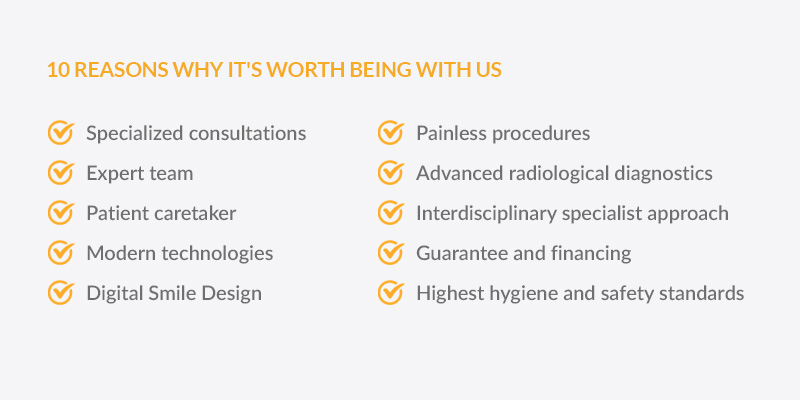Kraków: Lubostroń 22G lok. 7, +48 12 44 55 665 | Lipska 4 lok. 10, +48 731 704 731 | Wrocławska 53A, +48 731 704 787
Occlusal disease is a lifestyle-related condition that often intensifies between the ages of 22 and 45. Disorders in the joints, headaches, muscle pain, teeth mobility, or teeth fracturing are just a few of the symptoms. It is very important to pay attention to the symptoms of this disease.
Diagnosis is often incidental when a patient visits the clinic for an entirely different reason. For example, a chipped tooth or frequently falling out fillings.
Treating the effects of overloads and abrasions associated with occlusal disease is still not widely practiced in dentistry. This narrow field is still addressed by a small group of specialists worldwide. To identify symptoms, make an accurate diagnosis, and initiate treatment, specialized knowledge of occlusion is required.
It happens that due to improper contact between upper and lower teeth during sleep, teeth grinding occurs. This is also one of the symptoms of occlusal disease. These are abnormalities in the functioning of any component in the masticatory system. It includes teeth as well as muscles and the temporomandibular joint.
If we observe that your teeth are wearing down, shifting, or mobile, we proceed with muscle deprogramming and occlusal therapy. We also perform X-ray examinations and computer tomography. With this gathered material, we can prepare a treatment plan.
Early detection of occlusal disease allows for limiting the extent of treatment and its costs. However, if the disease develops in the future, you may incur much greater financial burdens associated with the need for full masticatory system rehabilitation. In such cases, effective treatment lasts for several months and requires the collaboration of a whole team of specialists, including:
• a prosthodontist,
• a surgeon,
• a periodontist,
• and an orthodontist.
However, if a dentist detects occlusal disease in its early stage, treatment may be limited to harmonizing the alignment of the upper and lower teeth. In such cases, simple procedures like gentle reshaping of teeth, crown replacement, or orthodontic treatment may suffice.












